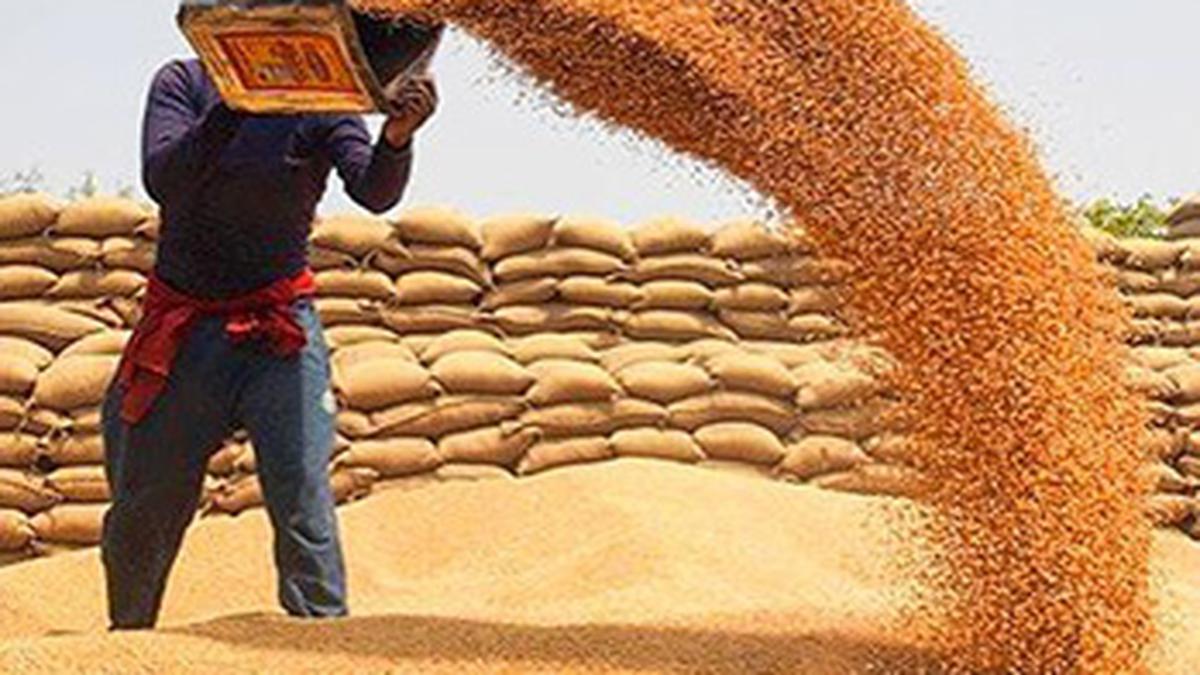
Explained | Why did the govt. impose a ceiling on wheat stocks? Premium
The Hindu
The reasons why the government has imposed a limit of the piling up of wheat stocks
The story so far: On June 12, in a move endeavouring to manage the “overall food security and to prevent hoarding and unscrupulous speculation”, the Union Government imposed limits on stock of wheat that can be held by traders, wholesalers, retailers, big chain retailers and processors. The objective here is to stabilise the price of the essential commodity by steadying supply. Secretary at the Department of Food and Public Distribution Sanjeev Chopra stated that there was enough stock of wheat in the country. The order stood effective with immediate effect until the end of March next year.
The permissible stock that traders/wholesalers can hold is 3,000 metric tonnes. Retailers and big chain retailers can hold up to 10 metric tonnes at each of their outlets, while the latter can hold up to 3,000 metric tonnes at all their depots combined. Processors would be able to stock 75% of the annual installed capacity.
The mentioned entities are expected to declare their stock positions and update them regularly on the Department of Food and Public Distribution’s portal. If the stock held by them are higher than the limit, they will have 30 days from the day of issue of notification to bring the same under the prescribed limits.
The government has also decided to offload 15 lakh tonnes of wheat from the central pool via the Open Market Sale Scheme (OMSS) to flour mills, private traders, bulk buyers, manufacturers of wheat products through e-auction. The idea is to control retail prices of wheat. They would be sold in lot sizes of 10 to 100 metric tonnes. This would be the first tranche, and more could be released depending on the prices and demand. The Food Secretary also announced that the government would offload rice under OMSS to moderate its prices. The quantity of the first phase of the e-auction (for rice) would be decided shortly.
The moves come in the backdrop of rising concerns about the overall wheat output taking a hit after the unseasonal rains and hailstorms towards the end of March and early April alongside hotter temperatures in February.
Lower production leads to higher prices of the crop. This could in turn create conditions for local prices exceeding the government’s purchase prices and thus, bothering the latter’s endeavour to stock up supplies.
The daily average price of wheat at the retail level, on June 14, stood at ₹29/kg compared to ₹27.54/kg a year back. At the wholesale level, it stood at ₹2,593.5 for each quintal against ₹2,557.89/quintal for the previous month and about ₹2,423/quintal a year back.

 Run 3 Space | Play Space Running Game
Run 3 Space | Play Space Running Game
 Traffic Jam 3D | Online Racing Game
Traffic Jam 3D | Online Racing Game
 Duck Hunt | Play Old Classic Game
Duck Hunt | Play Old Classic Game

















